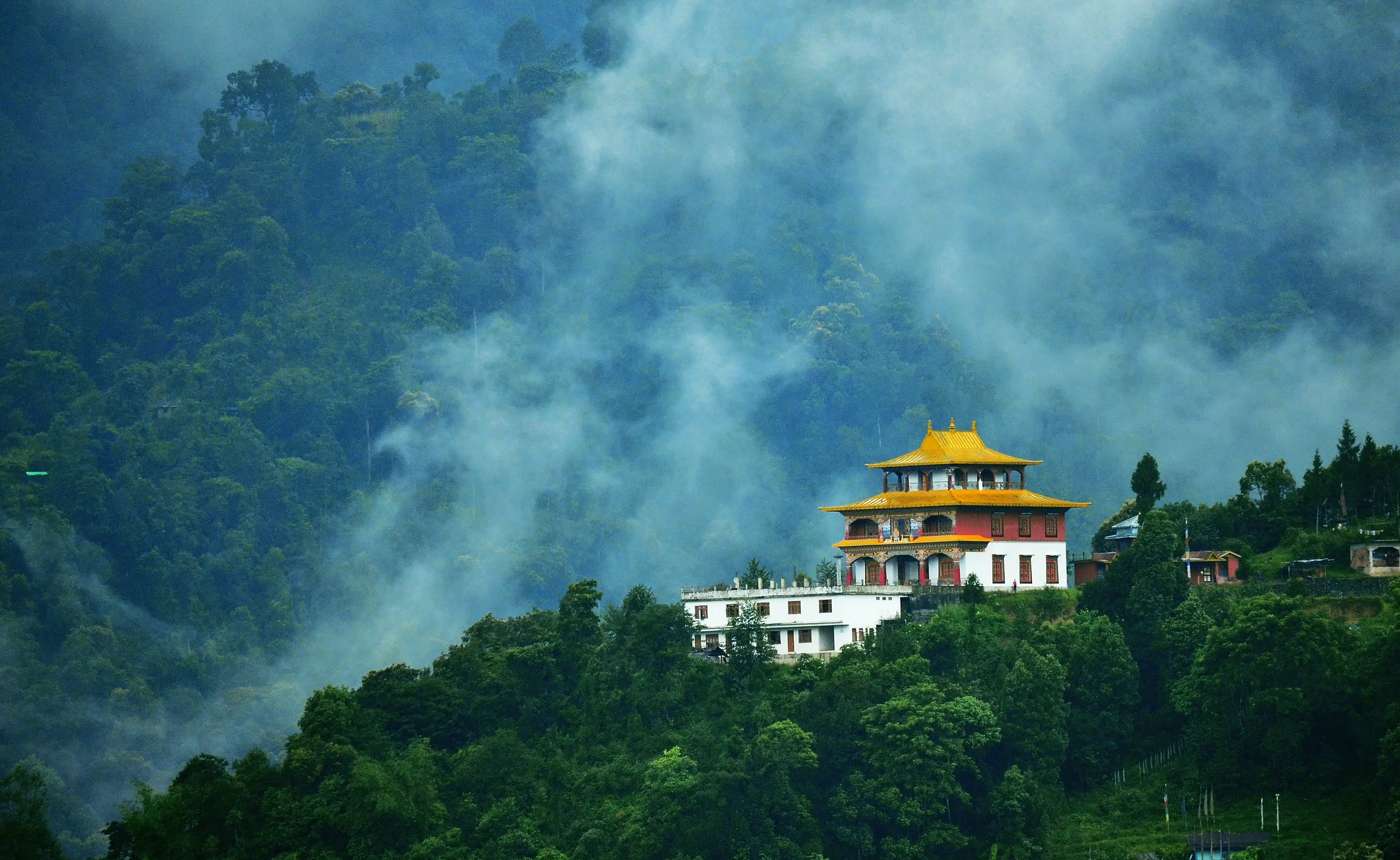
Hotels
•04 min read

The Potala Palace in Tibet towers high above Lhasa, a majestic symbol of Tibetan Buddhism. Its grandeur, set against the Himalayan backdrop, speaks of centuries of history and spiritual dedication. This blog post will answer common questions about the Potala Palace in Tibet. You will learn about its history, architecture, cultural importance, and travel tips. With simple language and clear ideas, our guide uncovers why this Tibetan architectural marvel is so cherished.
The Potala Palace is a magnificent structure in Lhasa, Tibet. It is recognized as a UNESCO World Heritage Site. The Palace has served as both a Buddhist monastery and the former residence of the Dalai Lama. This dual purpose emphasizes its role in religion and governance.
The Palace is famous for its spiritual significance and its deep roots in Tibetan history. It is a major religious symbol of Tibetan Buddhism and a top Lhasa tourist attraction. Today, it stands as one of the world’s most iconic cultural landmarks.
The history of the Potala Palace stretches back to the 7th century. It began as a modest structure and grew over time into an important monastery and seat of Tibetan governance. In the 17th century, the Fifth Dalai Lama rebuilt the palace into the grand structure we see today. Its historical transformation reflects the changing tides of Tibetan spiritual and political life.
The Palace consists of two distinct sections: the White Palace and the Red Palace. The White Palace was built for administrative purposes while the Red Palace hosts religious ceremonies and houses sacred artifacts. Visitors often marvel at the gilded roofs, delicate murals, and intricate woodwork that adorn these beautiful halls. Each element reinforces the status of the structure as a treasured Buddhist monastery in Tibet.
Although the Potala Palace has faced many challenges, it was never truly destroyed. Political shifts and historical events have put the Palace to the test. It has survived the influence of governing powers and harsh environmental conditions. Today, its preservation stands as a reminder of Tibet’s resilience and rich cultural tapestry.

Did You Know?
The Potala Palace is named after Mount Potalaka, the mythical abode of Avalokiteshvara, the Bodhisattva of Compassion, revered in Tibetan Buddhism. This connection deepens its spiritual significance and makes it a timeless emblem of Tibetan faith.
For centuries, the Palace served as the winter residence of the Dalai Lama. This role added to its cultural and spiritual importance. The Dalai Lama’s close association with the Potala Palace helped shape Tibetan identity and spiritual practice. Visitors are often moved by its calm, sacred atmosphere.
The global community recognizes the importance of the Potala Palace through its designation as a UNESCO World Heritage Site. Preservation efforts highlight the need to guard this cultural treasure. It is a site where history, art, and spirituality intersect—a beacon for lovers of Tibetan culture and travelers seeking rare insights into an ancient tradition.
The Palace is also a vibrant center for Tibetan Buddhism. It contains numerous religious artifacts, scriptures, and ritual spaces. Pilgrims travel far to witness the ongoing traditions that have been maintained within these walls. The spiritual practices performed here continue to inspire many who visit.
When planning a visit to the Palace, consider its location in Lhasa. Make sure to check ticketing details before your trip. It is best to visit during the milder seasons to avoid extreme weather and to better manage the high altitude. Respect for local traditions and preservation guidelines is important. Allow time to appreciate every detail of this living monument.
Lhasa offers many other captivating sites. For instance, the Jokhang Temple and Barkhor Street are must-sees for those interested in Tibetan culture. A stroll through these areas complements the visit to the site and provides a broader perspective on Tibetan life. These attractions interweave modern time with age-old customs.

Ensure you wear comfortable clothing and shoes when you explore the Palace. High-altitude conditions require proper hydration and sun protection. It is wise to learn about local customs beforehand. The simpler your travel preparations, the more you can focus on exploring the history and beauty of this Tibetan architectural marvel. Each tip is part of a broader potala palace travel guide that helps travelers fully enjoy the experience of visiting this ancient site.
The Potala Palace is famous as the former residence of the Dalai Lama, as a magnificent example of Tibetan architectural brilliance, and as a UNESCO World Heritage Site Tibet. Its cultural impact and historical significance draw countless tourists to Lhasa.
The Potala Palace was not destroyed. Over its long history, it faced many challenges but was never lost to time. Its resilience is celebrated by those who admire Tibetan cultural landmarks.
Yes, the Potala Palace still exists in Lhasa, Tibet. It continues to serve as a key symbol of Tibetan heritage and remains one of Lhasa tourist attractions cherished around the world.
Yes, the Dalai Lama lived in the Potala Palace. It served as his winter residence until the 14th Dalai Lama left Tibet for India in 1959.
The Potala Palace in Tibet is more than a building. It embodies centuries of wisdom, art, and spiritual practice. Its historical evolution from a humble monastery into a grand Dalai Lama residence highlights the depth of Tibetan culture. The architectural beauty of its white and red palaces, along with the detailed murals and woodwork, makes it a must-see landmark. As a UNESCO World Heritage Site, it draws visitors who wish to connect with the soul of Tibetan Buddhism. Exploring the Palace opens a window into both the past and the vibrant traditions of modern Tibet. With so much to offer, the Potala Palace remains a beacon of peace and cultural brilliance in one of the world’s most awe-inspiring regions.